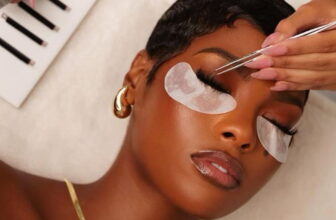Brazilian waxing is a grooming technique that has become increasingly popular in recent years. It involves the removal of all pubic hair from the front to the back, including the buttocks.
There are a lot of options on how to deal with your hair. You either braid them, go on a low-cut or wax them. However, getting a wax treatment is a different and time-effective way to deal with your hair, especially when unwanted. One such wax procedure is the Brazilian wax— a grooming procedure that transiently and progressively makes your pubic hair thinner and finer with results that last considerably longer than shaving, sugaring, and other hair removal techniques.
With a Brazilian wax, you won’t experience irritating or uncomfortable razor bumps and your skin will be softer than ever because waxing naturally exfoliates and you’d feel freer to wear your swimsuits or even more confident when you go out on that date night. *Winks*.
But here’s one thing though: if waxing isn’t already part of your beauty routine, it can sound really intimidating to explore. However, if you’re looking to channel your inner bald, read on for the Brazilian wax tips and everything you need to know before you head to your local wax clinic hoping to emerge free of unsightly hairs.
What is a Brazilian Wax?
Brazilian wax goes above all the other waxing procedures to remove all or most of the hair from the pubic area. It reminds me of the phrase in a gospel hymnal – “no, not one”. Literally, getting on a Brazilian wax is like signing up for hairlessness on your pube regions. It’s not a Brazilian wax if everything including the labia, butt, and the front of your pubic area; the area between your butt cheeks hasn’t been waxed off completely. It is the most comprehensive waxing you’ll ever get; your pubic area will be completely hair-free.
Brazilian waxes take 20 to 30 minutes to complete since they are so thorough. It can be a painful and uncomfortable experience, but many people choose to do it for personal or cultural reasons.
What to Expect During a Brazilian Wax
It might be unpleasant to wax such a delicate area, especially for beginners. Brazilian waxing doesn’t require paper strips, in contrast to waxing the chin, underarms, and brows. Waxing, however, causes the hair to grow in softer and finer since it eliminates the hair from the root. The procedures become less uncomfortable as you wax more. Also, a top-notch wax might make the procedure more comfortable. You might take a painkiller an hour prior to the procedure to further reduce pain.
If you are considering getting a Brazilian wax, it’s important to be aware of the potential risks and side effects. These may include pain, redness, irritation, ingrown hairs, and infection. It’s also important to find a reputable esthetician who uses clean and safe waxing techniques.
Ultimately, whether or not you choose to try a Brazilian wax is a personal decision. It may be helpful to talk to friends who have had the procedure done, read online reviews of salons and estheticians in your area, and consider your own comfort level with the process before making a decision.
How to Prep For a Brazilian Wax Procedure
Before getting a Brazilian wax, it is best that you show up to the wax table prepped and ready. Firstly, if you usually shave your pubic hair every day, take a break before scheduling your appointment. The wax needs something to grip, so your pubic hair should be at least a quarter inch long for the wax to be effective. It’s recommended to avoid shaving for at least 2-3 weeks before your appointment.
Also, Exfoliating the area to be waxed a day before your appointment can help remove dead skin cells and make the waxing process smoother. It is also important to avoid sunbathing and tanning because sun exposure can make the skin more sensitive and prone to damage during waxing. It’s recommended to avoid sunbathing and tanning beds for at least 24-48 hours before your appointment.
It is very essential to choose the right time for the procedure and avoid scheduling a waxing appointment right before or during your period, as the skin can be more sensitive and you may be more prone to discomfort. Also, let your esthetician know if it’s your first time getting a Brazilian wax or if you have any medical conditions, allergies, or sensitivities that they should be aware of.
Expect some discomfort because waxing can be painful, just like any procedure that involves the hair follicles and especially in sensitive areas like the bikini area. However, the pain is usually manageable and only lasts only a few seconds.
Side Effects of Brazillian Wax
Brazilian waxing can be quite painful, especially for those who have sensitive skin. It can also cause some discomfort in the area for a few hours after the procedure. Some people may experience skin irritation or redness in the waxed area, which can be caused by the heat of the wax or the pulling of the hair.
Also, Ingrown hairs can occur after waxing, especially in the pubic area. This is when the hair grows back into the skin instead of growing outwards, causing bumps and irritation.
If the waxing is not done in a hygienic manner, it can lead to bacterial or fungal infections in the waxed area. The waxing procedure can also result in small cuts or nicks in the skin, causing bleeding in certain cases.
Some people may be allergic to the wax or other products used during the procedure, which can cause itching, hives, or other skin reactions and this is why it is important to consult with your aesthetician before getting on the procedure.
It is important to prepare the skin before waxing and to follow proper aftercare instructions to minimize the risk of these side effects. If you experience severe or persistent side effects after waxing, it is recommended to consult a healthcare provider.
How Long Does A Brazilian Wax Last?
The duration of the results of a Brazilian wax can vary from person to person, depending on their hair growth cycle and individual factors. However, on average, a Brazilian wax can last anywhere from 3 to 6 weeks before the hair starts to grow back.
This is because waxing removes the hair from the root, which slows down the regrowth process. Over time, as the hair starts to grow back, it may become thinner and softer, making it less noticeable than before.
It is important to note that the regrowth rate and duration of the results can be affected by various factors, such as hormones, medication, genetics, and the frequency of waxing. It is generally recommended to wait at least 4-6 weeks between waxing sessions to allow the hair to grow back to the optimal length for another waxing procedure.
Is Brazilian waxing Suitable For Everyone?
Brazilian waxing is not suitable for everyone – you may want to consider other hair removal options if you have sensitive skin or are pregnant.
If you have any skin conditions, such as eczema, psoriasis, or dermatitis, you should avoid Brazilian waxing. This treatment can irritate the skin and make these conditions worse. If you are pregnant or breastfeeding, you should also avoid Brazilian waxing.
If you are looking for an alternative to Brazilian waxing, there are several options available. You can try sugaring, which is a less-invasive hair removal method, or you can try a different waxing method, such as Bikini waxing or Hollywood waxing.
DIY Brazilian Wax
The first thing you should do if you have to wax yourself at home is to try to unwind. This is especially important because there won’t be a technician there to ease your anxiety. The most crucial step in minimizing discomfort and irritability while waxing is to carefully read the directions and safety precautions on the waxing kit remember to be patient and take breaks as needed.
If you experience too much discomfort or pain, it may be best to stop and seek the assistance of a professional. If you still wish to proceed with a DIY Brazilian wax, here are the steps you can follow:
- Purchase a high-quality waxing kit specifically designed for Brazilian waxing. These kits typically include wax, spatulas, and strips.
- Before you begin, look for a position that’s comfortable enough. Staying in front of a mirror your body size is recommended.
- Trim your hair to about a quarter of an inch in length. You can use scissors or clippers to do this.
- Clean the area thoroughly and dry it with a towel.
- Heat up the wax according to the instructions on the package. Make sure it is not too hot to avoid burning yourself.
- Apply the wax in small sections, spreading it in the direction of hair growth.
- Place a strip over the wax and press down firmly.
- Quickly pull the strip off in the opposite direction of hair growth. Pull it parallel to your skin rather than pulling it straight up.
- Repeat steps 5-7 until you have removed all the hair you want to remove.
- Use a soothing lotion or aloe vera gel to calm the skin.
Brazilian Wax Aftercare
Your aesthetician will likely give you aftercare instructions to follow, such as avoiding hot showers, and saunas, and swimming for 24 hours after the wax. It’s important to follow these instructions to avoid irritation and infection.
Remember that everyone’s pain tolerance and experience with waxing are different. It’s always a good idea to do your research and choose a reputable salon with trained estheticians to ensure a safe and comfortable experience.
Additionally, other aftercare recommendations especially if you’ve explored the DIY option include:
- Avoid wearing tight clothing that may irritate the area. Loose, breathable clothing is recommended.
- Keep the area clean and dry to avoid infection. Use a gentle, fragrance-free cleanser to clean the area daily.
- Apply a soothing lotion or cream to the area to reduce redness and irritation. Look for products with aloe vera or chamomile.
- Avoid touching the area with unwashed hands to reduce the risk of infection.
- Avoid shaving, waxing, or using any other hair removal methods in the area for at least two weeks.
- Exfoliate the area gently with a gentle scrub or exfoliating glove 2-3 times per week to prevent ingrown hairs.
- If you experience any pain, redness, or bumps, apply a warm compress to the area to soothe the skin. If symptoms persist, consult a healthcare professional.






